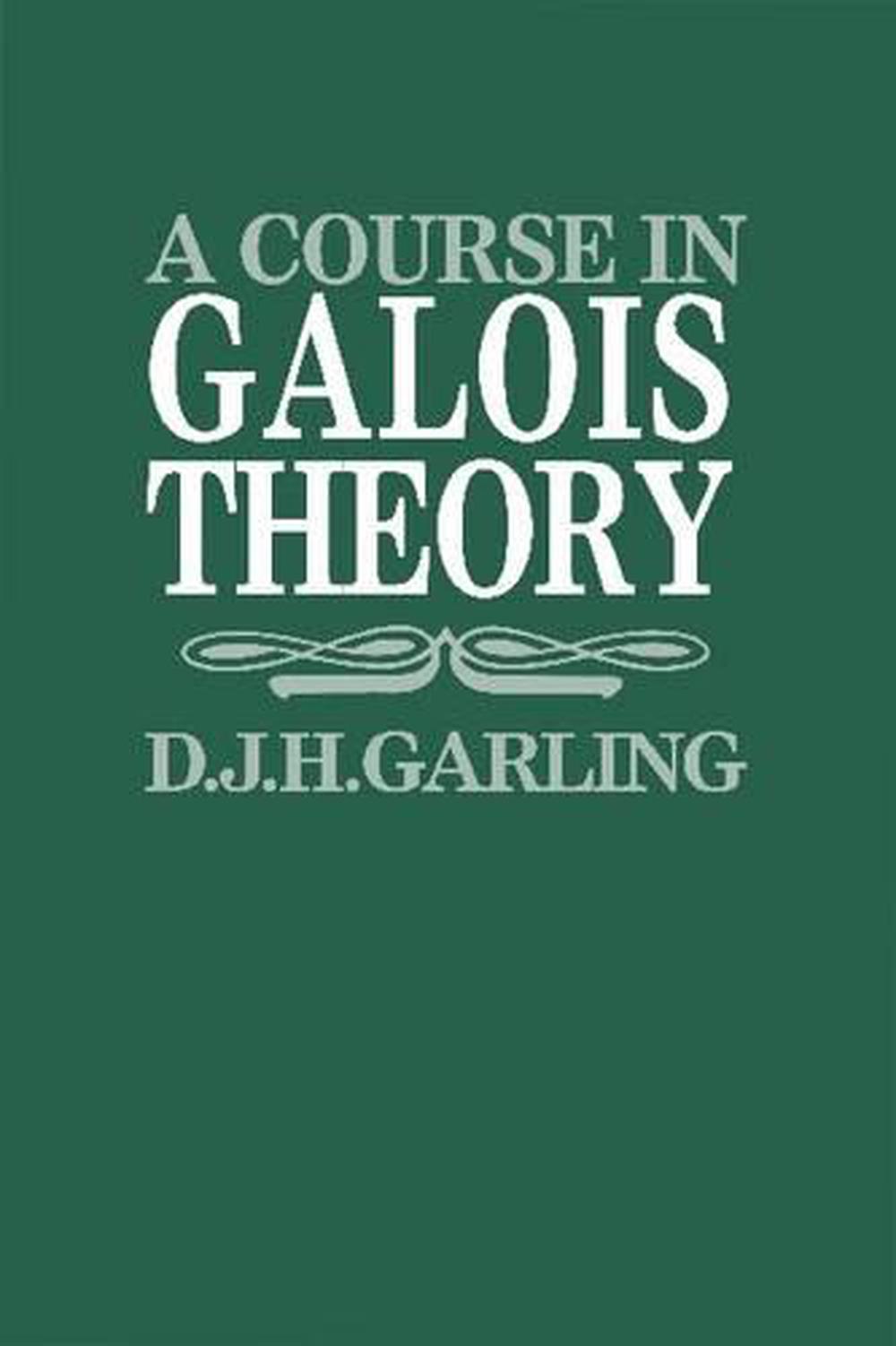
When you click on links to various merchants on this site and make a purchase, this can result in this site earning a commission. Affiliate programs and affiliations include, but are not limited to, the eBay Partner Network.
A Course in Galois Theory by D.J.H. Garling (English) Paperback Book

- Item No : 365508976236
- Condition : Brand New
- Brand : No brand Info
- Seller : the_nile_uk_store
- Current Bid : US $69.59
-
* Item Description
-
The Nile on eBay

A Course in Galois Theory
by D.J.H. Garling
Galois theory is one of the most beautiful branches of mathematics. By synthesising the techniques of group theory and field theory it provides a complete answer to the problem of the solubility of polynomials by radicals: that is, the problem of determining when and how a polynomial equation can be solved by repeatedly extracting roots and using elementary algebraic operations. This textbook, based on lectures given over a period of years at Cambridge, is a detailed and thorough introduction to the subject. The work begins with an elementary discussion of groups, fields and vector spaces, and then leads the reader through such topics as rings, extension fields, ruler-and-compass constructions, to automorphisms and the Galois correspondence. By these means, the problem of the solubility of polynomials by radicals is answered; in particular it is shown that not every quintic equation can be solved by radicals. Throughout, Dr Garling presents the subject not as something closed, but as one with many applications. In the final chapters, he discusses further topics, such as transcendence and the calculation of Galois groups, which indicate that there are many questions still to be answered. The reader is assumed to have no previous knowledge of Galois theory. Some experience of modern algebra is helpful, so that the book is suitable for undergraduates in their second or final years. There are over 200 exercises which provide a stimulating challenge to the reader.
FORMAT
PaperbackLANGUAGE
EnglishCONDITION
Brand New
Publisher Description
Galois theory is one of the most beautiful branches of mathematics. By synthesising the techniques of group theory and field theory it provides a complete answer to the problem of the solubility of polynomials by radicals: that is, the problem of determining when and how a polynomial equation can be solved by repeatedly extracting roots and using elementary algebraic operations. This textbook, based on lectures given over a period of years at Cambridge, is a detailed and thorough introduction to the subject. The work begins with an elementary discussion of groups, fields and vector spaces, and then leads the reader through such topics as rings, extension fields, ruler-and-compass constructions, to automorphisms and the Galois correspondence. By these means, the problem of the solubility of polynomials by radicals is answered; in particular it is shown that not every quintic equation can be solved by radicals. Throughout, Dr Garling presents the subject not as something closed, but as one with many applications. In the final chapters, he discusses further topics, such as transcendence and the calculation of Galois groups, which indicate that there are many questions still to be answered. The reader is assumed to have no previous knowledge of Galois theory. Some experience of modern algebra is helpful, so that the book is suitable for undergraduates in their second or final years. There are over 200 exercises which provide a stimulating challenge to the reader.
Author Biography
D. J. H. Garling is an Emeritus Reader in Mathematical Analysis at the University of Cambridge and a Fellow of St John's College, Cambridge.
Table of Contents
Preface; Part I. Algebraic Preliminaries: 1. Groups, fields and vector spaces; 2. The axiom of choice, and Zorn's lemma; 3. Rings; Part II. The Theory of Fields, and Galois Theory: 4. Field extensions; 5. Tests for irreducibility; 6. Ruler-and-compass constructions; 7. Splitting fields; 8. The algebraic closure of a field; 9. Normal extensions; 10. Separability; 11. Automorphisms and fixed fields; 12. Finite fields; 13. The theorem of the primative element; 14. Cubics and quartics; 15. Roots of unity; 16. Cyclic extensions; 17. Solution by radicals; 18. Transcendental elements and algebraic independence; 19. Some further topics; 20. The calculation of Galois groups; Index.
Review
"This is a marvellous little book. It is characterized by good mathematical taste, plain and elegant language, and an earthy but precise style." Carl Riehm, Mathematical Reviews
Review Quote
"This is a marvellous little book. It is characterized by good mathematical taste, plain and elegant language, and an earthy but precise style." Carl Riehm, Mathematical Reviews
Promotional "Headline"
This textbook, based on lectures given over a period of years at Cambridge, is a detailed and thorough introduction to Galois theory.
Details
ISBN0521312493Author D.J.H. GarlingShort Title COURSE IN GALOIS THEORYPages 176Publisher Cambridge University PressLanguage EnglishISBN-10 0521312493ISBN-13 9780521312493Media BookFormat PaperbackDEWEY 512.32Illustrations YesYear 1987Publication Date 1987-01-31Imprint Cambridge University PressPlace of Publication CambridgeCountry of Publication United KingdomResidence ENKEdition 0003rdDOI 10.1604/9780521312493Audience College/Higher EducationUK Release Date 1987-01-08AU Release Date 1987-01-08NZ Release Date 1987-01-08Replaced by 9781108969086


-
- The Lost Super Foods
- $ 37.00
- The Self-Sufficient Backyard
- $ 37.00
- A Navy Seals BUG IN GUIDE
- $ 39.00
- Childrens Books Phonics Lot 60
- $ 34.99
















